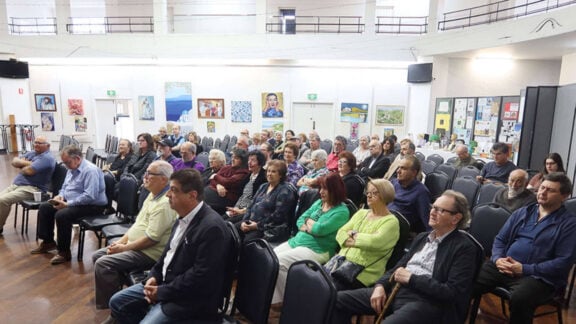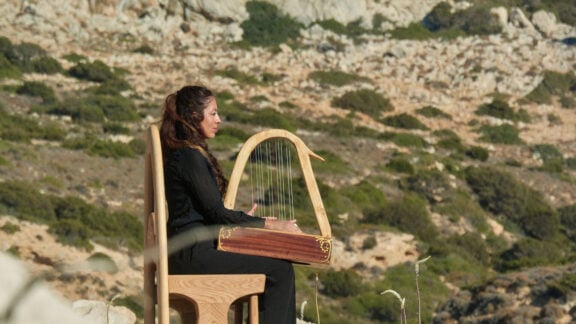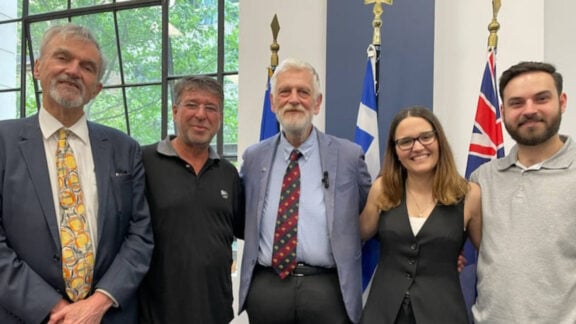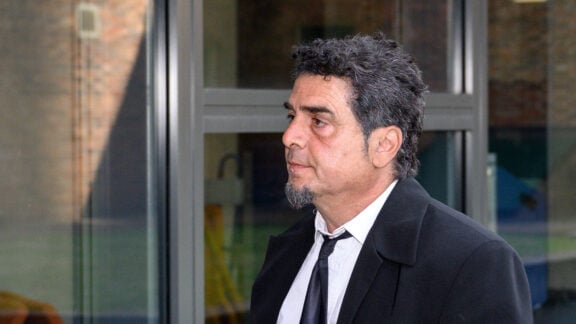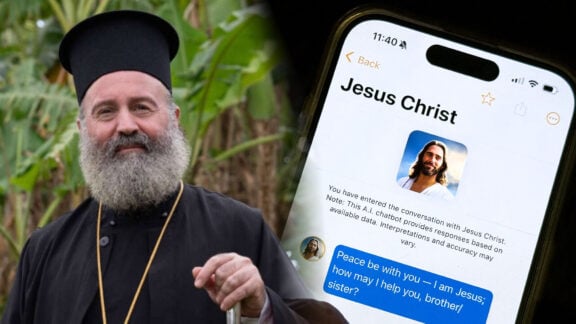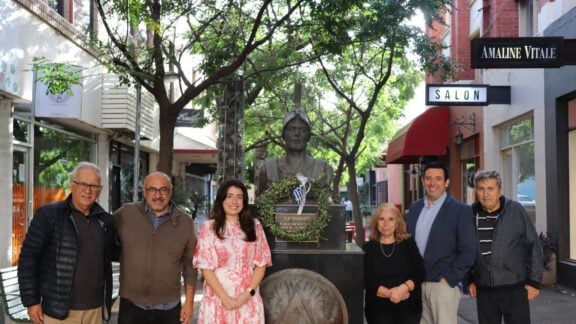The villagers of the Mani who helped over 200 Allied soldiers – including many Anzacs – escape from the advancing Germans after the fall of Kalamata have been honoured in their own land. On the afternoon of 12 May nearly 100 people made the journey along the Mani coast south of Kardamyli to the beautiful village of Trahila.
We had assembled there following many years work that culminated in this important event. It stretched back to the day I was introduced by my friend Paul Sougleris to Catherine Bell, the daughter of Greek campaign veteran Private Syd Grant. Once she had told me the story of her father I was captivated.
Syd had left his rural Victorian life to join the call to arms as so many others did when war was declared in WW2. The war would bring him to Greece to take part in its valiant but doomed defence in the face of the Axis invasion. One of the most interesting aspects of Syd’s wartime service is that he captured his experiences with his camera. Amongst these are striking photographs of Kalamata and Trahila taken as the campaign on the mainland drew to a close. Together with his writings and Catherine’s post-war interviews with her father, these represent a unique archive of the Anzac experience in Kalamata and Trahila.

Most importantly this archive documents the support the Allied soldiers received from the local villagers in Trahila as the men tried to evade capture by the advancing Germans. His image of local women bringing food to the weary men as they hid above the village beside Agia Paraskevi Church is unequalled in its depiction of this heartfelt support by locals for Allied soldiers on the run.
Field research in the village by myself and Paul revealed the descendants of these brave women and other locals depicted in Syd’s photographs. I also came to find the accounts of other Allied soldiers who were similarly awaiting evacuation from the Mani coast such as Oakleigh’s Private George Foot and Camberwell’s Captain Robert Vial. Syd and his fellow Allied soldiers would be successfully evacuated by three Royal Navy warships from Trahila and two other nearby villages in the early hours of 1 May 1941 – the last major Allied evacuation from the Greek mainland.

Syd was so moved by his experience in the region that after the war he not only renamed the family farm “Kalamata” but also returned to Trahila to meet those who had helped him escape capture. It was this story that moved me to begin the project that would see the Mani Evacuation Memorial erected at Trahila harbour. Drawing on my research I was able to design the plaque, the production funded by Melbourne’s Pammessinian Brotherhood Papaflessas and installation by the West Mani Municipality and the Peloponnese regional government.

Organised by the West Mani municipality, the event took place at the harbour front where Syd had departed. The plaque was installed on a sandstone plinth, the stone quarried from Proastio, a nearby village with its own connection to the Greek campaign. The memorial was accompanied by a display of Syd’s photographs and an accompanying booklet developed by myself and the West Mani municipality.
Many dignitaries joined the locals for the unveiling, including the Australian Ambassador to Greece Alison Duncan, the British Deputy Ambassador Susan Geary and the former Canadian Ambassador Robert Peck. These representatives were joined by a number of Hellenic government and community representatives, including Mayor Chioureas, Messinian Deputy Governor Stathis Anastasopoulos and the Secretary of Messinians Abroad Panagiotis Bazogios (who has visited Melbourne on a number of official occasions). Many members of the UK-based 1941 Greek Campaign Veterans Brotherhood were also present, including Chair David Sanderson and Secretary Janet Parkin along with Barry Parkin, Doug Beckett, Paul Hadwin and others.

Following official speeches by Chioureas, Duncan, Anastasopoulos and myself, the memorial was officially unveiled jointly by myself, Chioureas, Duncan and Geary – with the raising of the Australian flag covering the memorial – to the rousing applause of the crowd. In my address I explained the story of the Mani evacuations, Syd Grant’s war and time at Kalamata and Trahila and the creation of the memorial. In this I congratulated both Melbourne’s Pammessinian Brotherhood Papaflessas and the West Mani municipality for their active support for the project. I also communicated a message of thanks from Catherine Bell on behalf of the Grant family.

After the unveiling I led a small group from the event to the Agia Paraskevi Church above Trahila village where Syd Grant and others had been hidden and supported by the villagers in the days prior to their evacuation. I had been able to locate this site a few years back with the help of locals and Syd’s photographs from 1941. Standing at this location was a moving experience for the many British veterans descendants present.

The unveiling of the plaque was followed by a special screening of our 1941 Greek campaign documentary – Anzac The Greek Chapter – at the prestigious Patrick Leigh Fermor House near Kardamyli. The house was gifted to the Benaki Museum following Patrick’s passing a few years ago. This screening location was the result of enthusiastic discussions between myself, Chioureas and the Benaki Museum’s Myrto Kaouki.

The house has been faithfully restored, revealing itself as Patrick and his wife Joan would have known it. The buildings and gardens was erected with loving care at Patrick and Joan’s direction, containing features drawn from the life of this famous philhellene. His extensive library with windows opening out onto views of the beautiful waters below as well as its wonderful terracotta tiled patio embrace the surrounding environment. It was on this patio – to the sound of the lapping coastal waters below as the light of the moon bathed the whole scene – that our documentary was shown to the enthusiastic invited audience of over fifty people. These included many who had attended the memorial unveiling and others who had travelled specially to see the film, such as the Benaki Museum’s Nikos Tryfouldis.

The screening was preceded by an amazing catered reception and short addresses by Chioureas, Anastasopoulos and myself. I explained the genesis of the film in the campaign veteran interview archive of my friend historian Dr Peter Ewer and its production for the Lemnos Gallipoli Commemorative Committee through a Veterans Affairs Department grant. Committee member and Greek Community of Melbourne Director Vicki Kyritsis gave a live English language translation of Anastasopoulos’ Greek language address.
What more appropriate location could there have been for our film honouring the Anzacs who came to defend Greece and their Greek hosts than this home of the famous Greek campaign veteran and philhellene, surrounded by the sweet smell of his garden and the abundant rosemary for remembrance never far from view. The screening was watched attentively by the audience and given rousing applause as it concluded. Many attendees – especially those veterans descendants present – expressed amazement at the production in terms of its unique content and quality, with many supporting its being given a wider audience.

The support of the local authorities and institutions for the project was overwhelming. Firstly the West Mani Mayor Giorgos Chioureas was an eager supporter from the moment he was approached. He was able to marshal the support of professional assistance, who along with his staff, staged one of the best commemorative events I have ever attended in Greece. A big thank you to local project workers Efi Cheila and Nelly Kouvelaki. I would also like to thank both the previous West Mani Mayor Giannamaras and Melbourne’s Peter Pastitseas for their support of the project.
Thanks also to the Peloponnese regional government for assisting in the transport of the plaque to Trahila. A big thank you to the Benaki Museum for their graciously offering the Patrick Leigh Fermor House as a venue for the screening, especially the Museum’s Kaouki.

Thanks to the diplomatic representatives who made the special journey from Athens and beyond – Alison Duncan, Susan Geary and Robert Peck – for their bringing added recognition to the commemorative importance of the event. I took the opportunity to present Geary with copies of my Lemnos & Gallipoli Revealed and Grecian Adventure on behalf of our Committee.
But most importantly thanks to the local people of Trahila who have warmly embraced the project as soon as they heard of it. Their attachment to the plaque and what it honours was revealed in the strong expressions of friendship made throughout the event. Their decision to place the memorial in such a prominent space at their beautiful harbour front will ensure its recognition into the future.
Unfortunately Syd’s daughter Catherine Bell was unable to attend the event but she sent the Grant family’s heartfelt thanks to the people of Trahila for so honouring both her father’s memory and that of those locals who assisted him. As she told me they was there in spirit. Syd would be overwhelmed at the journey his photographs and story had taken.
*Jim Claven OAM is a trained historian, freelance writer and published author who has been researching the Hellenic link to Australia’s Anzac story for many years. He can be contacted via email – jimclaven@yahoo.com.au




